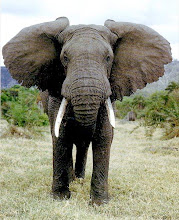Before the arrival of the Europeans on the continental United States, Native American tribes “owned” land and the natural resources upon that land. However, Native Americans did not believe in the concept of “owning” land. They knew that in order to survive, one must cooperate with nature. They did not go hungry, or ever run out of food or fuel. The hunting grounds were filled with buffalo and wild herbs. The Indian Removal Act of 1830 took away Huron and Seminole land, the Act took away all land from all the eastern Native American tribes, but I am going to focus specifically on the Huron and Seminole tribe, and stated that they had to move to Indian Country in Oklahoma. The Seminole tribe resisted the attempts of General Jackson to remove them during the First Seminole War from 1814 to 1818 by hiding deep within the Everglades. After the Second Seminole War of 1835 to 1842, 3,000 Seminole were removed to a reservation in Oklahoma, and are now the federally recognized Seminole Tribe of Oklahoma. Similarly, in 1842 the Huron tribe was forcibly removed to reservation land in Kansas. However, 5,000 Seminole remained hidden in the Everglades and were not moved to a reservation. The descendents of these 5,000 Seminole make up the Miccosukee tribe of Seminole Indians and the Seminole Tribe of Florida. Once the Huron tribe and the Seminole Tribe of Oklahoma reached their respective reservations, the land was parceled out, or "allotted", to each family. Each head of the family was granted a 160 acre piece of land to cultivate and raise cattles and crops upon. The Seminole Tribe of Oklahoma and the Huron tribe lost additional reservation land when the United States government opened up reservation land to white settlers. Native American culture is defined by taking what is provided, and only as much as is needed. They lived off of the land, what grew on the land and what was born on the land. As a result of this philosophy, The federal government tried to “civilize” Native American children, by taking them off their reservations and to a bording school, sometimes miles away, for their "American education". The teachers, sometimes nuns from the local missionaries, taught them English, Math, Science and Music, but did not teach the children about tribal culture, language and traditions. The children were scared of the school because they did not understand English and the teachers would not let the students speak their native language. Furthermore, the Native American children could not know anything about their “savage” tribe. Additionally, the Native American children were constantly told that they were inferior. The education they recieved was supposed to help them learn the white ways of farming, cattle raising, industry, and societal behavior. With a Christian education and faith, the federal government believed that the Native Americans would become "civilized" contributors to society. Who decides what they should and should not be taught?
Later, the federal government, realizing the horrible conditions that Native Americans had on their reservations, decided to start helping them. First, they passed the Indian Citizenship Act of 1924. Next, Congress developed the Indian Reorganization Act 1934. Restoration with setting aside lands specifically for Indians, state government could not interfere or rule over aspects of Native American tribes “domestic dependent nations”.
Not longer after the Restoration Period, the federal government grew tired of helping Native Americans; it just wanted them to become part of society. Whites were also getting tired of the special treatment that the Native Americans were receiving; they didn’t like the idea of a United States, but with different Native American tribes residing within the borders. States and white residents did not trust the Native Americans. They believed that Native Americans were savages who would cheat and steal. Consequently, the government withdraw its support and financial aid, and left the tribes to their devices. For example, the government ignored the treaties it had made with the Native American tribes, and letthe states and settlers take over reservation land and treat the tribes and citizens however they wanted. The government gave states the ability to control Native American tribes on reservations through Public Law 280, which states that the states have the power enforce civil and criminal laws in Indian Country.
The links that lead you to books.google.com are in my analysis post because I have those books for my first year seminar class, and found useful information inside them. However, since we can only use online sources, I found the books online and provided links to them. Not all of the book is shown, but the title and author are there in case you want to check them out at a library.
